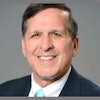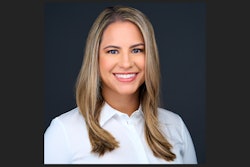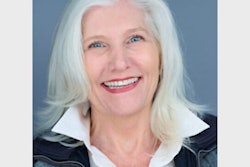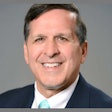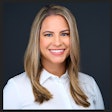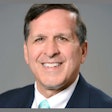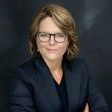Everyone is getting squeezed by higher costs these days, including dental practice owners. A recent DrBicuspid.com survey found that practice owners are more worried about higher operating costs than they are about other business challenges, like competition or patient demand. In fact, 65% of survey respondents said soaring operational costs are their most pressing concern.
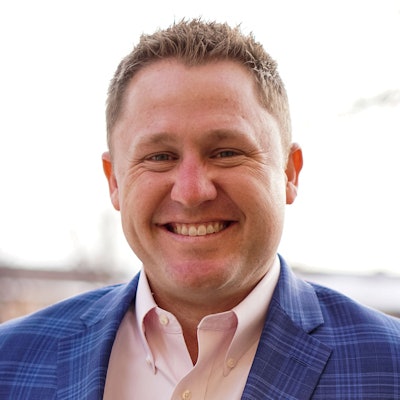 Kyle Francis.
Kyle Francis.
Price pressure is related to overall inflation, and unfortunately, it doesn’t affect just a single line item. Inflation drives prices higher across all expense categories.
Suppliers are paying more for raw materials and passing the costs along to dentists in the form of higher prices for everything from disposable gloves to dental chairs and diagnostic equipment.
Here’s a brief look at how dental practice owners can address the surge in operating expenses and why partnering with a dental service organization (DSO) might be your best bet to offset higher costs.
Raising revenue to counter operating cost increases
Practice owners continue to contend with the post-pandemic cost spike. When the highest inflation rate in decades hit several years ago, most dentists didn’t immediately respond by raising fees to keep up.
With low inflation rates before the pandemic, dental practice owners didn’t raise fees and give patients sticker shock, but with operating cost increases now ranging from 25% to 30%, the math demands it.
Dentists who operate on a fee-for-service basis can raise their prices to reflect increased costs, but payer mix is a critical factor for most dentists. Practices with preferred provider organization (PPO) insurance contracts can’t raise prices unilaterally; they are constrained by agreements on reimbursement levels and patient co-payments.
Insurers didn’t respond quickly to pandemic-related inflation by increasing reimbursement rates commensurate with higher operating costs. PPO reimbursement rates have crept up over the past few years, but they generally haven’t kept pace with rising costs. This explains why practice owners list higher operating costs as their chief concern.
A DSO partnership can help dental practices lower their operating costs
Solo practitioners are in a tough position when they try to renegotiate fees with insurers to offset rising operating costs. A DSO partnership can provide the leverage they need, pooling patients served by multiple dental practices to increase negotiating power.
That’s one obvious advantage of an affiliation with a DSO, but there are other ways a DSO partnership helps dentists hold the line against rising operating costs. For example, DSOs keep costs down with economies of scale by using an in-house procurement group to negotiate lower prices on supplies and lab services.
Professional service costs are another line item where DSO partnerships can pay off. Solo practitioners pay accountants to handle the books, whereas DSOs typically have accountants in-house or a dedicated professional at a large accounting firm who manages the books for a per-capita rate that is lower than what independent practices pay. The same is true for other professional services, such as marketing.
HR management is another line-item expense that DSOs typically manage more efficiently than independent practices. As solo practitioners know all too well, it takes a lot of time, effort, and money to recruit hygienists. An independent practice will pay the same salary as a DSO, but the doctor or office manager at a DSO-affiliated practice will avoid the headaches involved in recruiting, and DSOs can leverage economies of scale to offer better benefits.
DSO affiliates can tap into the larger organization’s resources to avoid paying high temporary worker fees to fill the gap when a hygienist leaves. With a DSO partnership, dental practice owners can also avoid costly mistakes, such as what a $2.2 million per year California practice made when it lost one of its four hygienists upon reopening after the pandemic.
The practice hired a new hygienist at a significantly higher salary than what the three hygienists already on board were making. When word got out, the three original hygienists lost trust in management and left, opting to work for a DSO with a transparent salary policy. It was a strategic error that also delayed the practice owner’s plans to sell the business, so there was an opportunity cost as well.
Fewer hats to wear, more time to focus on patients
The bottom line is that professionals who specialize in a single facet or area tend to operate more efficiently and effectively than a doctor-owner who is treating patients and wearing many hats to keep the operation profitable. A procurement specialist with many contacts can be better equipped to deal with a sudden supply shortage than a dental practice owner who is frantically searching for gloves and masks on Alibaba between patient visits.
In an uncertain economy, practices with access to revenue cycle management experts are likely to have better outcomes than busy doctors who are trying to figure out what’s happening in the market. Independent practices can either develop the necessary expertise in-house or consider a partnership that delivers value.
The good news is that the dental industry is resilient. Doctors encourage patients to brush and floss to avoid cavities, but if the patient gets a cavity, they’ll need a crown or an extraction. And to regain function after an extraction, they’ll need a bridge or implant. As we saw after the COVID-19 shutdown, dental care can only be deferred for so long.
No one has a crystal ball that foretells the economic future, not even Warren Buffett. But access to expertise can make the odds of a better outcome more likely. That’s true of patient care and in business, too. If higher operating costs are keeping you up at night, consider accessing DSO expertise to help you manage expenses and reduce risks to the practice you’ve built.
Kyle Francis has worked in the dental and medical field since 2005, consulting for practices, medical device companies, and groups of practitioners. He has used this knowledge to consult with more than 50 startup companies and dental practices, as well as to help build over 100 dental and medical practices across the U.S. He has owned all or part of more than 20 practices and has been an investor in multiple dental service organization concepts. Learn more about his company, Professional Transition Strategies.
The comments and observations expressed herein do not necessarily reflect the opinions of DrBicuspid.com, nor should they be construed as an endorsement or admonishment of any particular idea, vendor, or organization.
